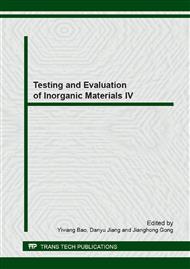p.293
p.297
p.301
p.305
p.311
p.316
p.321
p.325
p.329
Theoretical and Experimental Studies on Stresses in Vacuum Glazing due to Temperature Difference
Abstract:
The existence of a temperature difference across a vacuum glazing causes dimensional differences between the hot and cold glass sheets, with associated mechanical stresses and bending. In order to understand the distribution characteristics of the stresses and deformation in vacuum glazing due to temperature difference, in this work, the mechanical models were established and the calculation formula of the shear stress in the edge seal and bending tensile stress on the surface of the two glass sheets of the vacuum glazing were given. A test device was designed and the maximum tensile stresses and deflection of the vacuum glazing with various temperature difference were tested by experimental, it was shown that they are identical between the experiments and the theories.
Info:
Periodical:
Pages:
311-315
Citation:
Online since:
November 2013
Authors:
Price:
Сopyright:
© 2014 Trans Tech Publications Ltd. All Rights Reserved
Share:
Citation:


